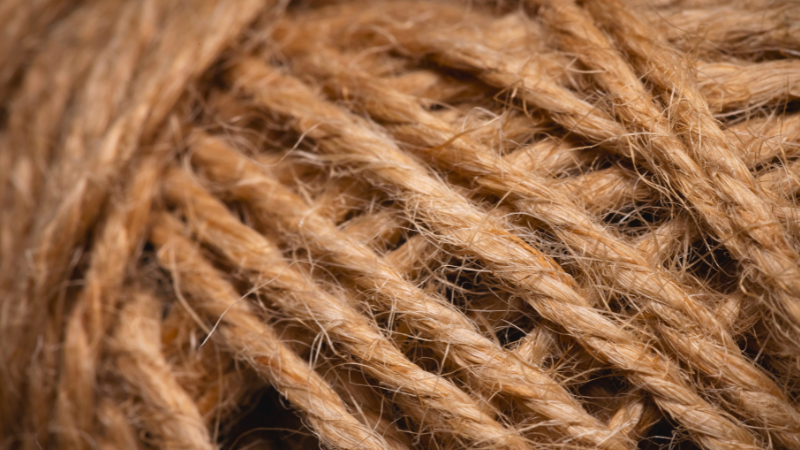
With the world moving more to sustainable practices, jute has emerged as an outstanding plant-based fiber in the textile sector. The jute, which is also referred to as the Golden Fiber, is obtained through the Corchorus plant, which is mostly cultivated in India and Bangladesh.
What Is Jute and Where Does It Come From?
Jute is a natural fiber that is obtained out of the Corchorus capsularis and Corchorus olitorius plants. The fiber is obtained off the outer skin of the plant stalk and thus appears shiny and golden. Raw Jute is mainly cultivated in India and Bangladesh, but it grows well in a humid, tropical environment and little fertilizer is required.
It is a sustainable crop because it grows very rapidly, particularly when the monsoons are taking place. Jute also aids in absorption of carbon dioxide, thus making farming environmentally friendly. This fiber is often used in making jute bag, rugs, upholstery, because it is strong, biodegradable and eco-friendly, giving it a viable alternative to synthetic fiber.
What Is Jute Made Of?
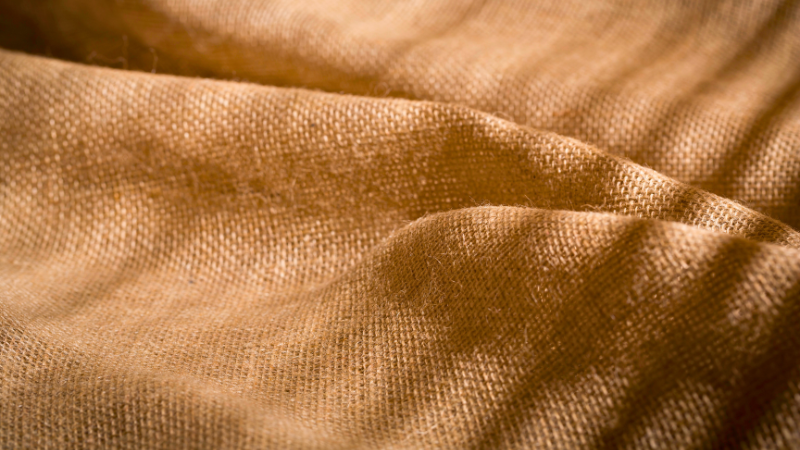
Jute is produced using the fibers of the jute plant, which is mainly composed of two major components that are cellulose and lignin. Cellulose is a natural polymer which helps jute producers in making the fiber last longer. Lignin gives it a structure so that even when the fibers are made into a fabric, they do not get loose and weak.
The fibers, during jute production, are then combed and processed to remove the impurities, then it is spun into jute yarn or woven into jute fabric. The final result is a strong and biodegradable product, which can be used in anything, including burlap sacks and jute bags and to more advanced products such as jute upholstery and fashion accessories.
What Is Jute Fabric?
Jute fabric is a rough and loosely stitched fabric normally composed of jute fiber. It is characterized by rough, rustic look, brown natural color, and texture that is slightly rough. Although it is rough, jute fabric is so strong and durable that it is suitable in a number of green products.
Usually, jute fabric is utilized in:
- Sacks and bags: These are used to package commodities such as coffee beans, rice and grains.
- Rugs and carpets: Jute is the perfect choice in carpets and rugs because it is sturdy and has a rough texture and provides a natural and earthy look to any room.
- Home decor and upholstery: Eco-friendly interior design can be made out of jute fabric in cushion to wall hangings.
- Fashion items: Jute is more frequently applied in totes, sandals and other accessories which are of interest to people who want to make sustainable fashion decisions.

Properties of Jute Material
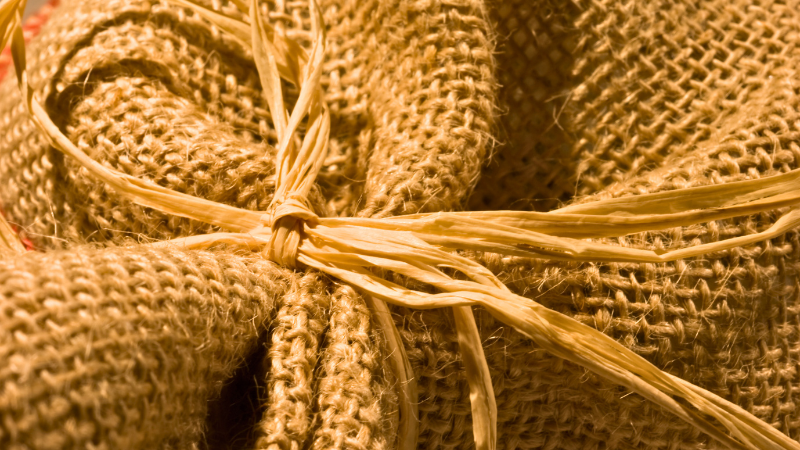
Jute fibers possess a number of important features making them quite distinct among the natural fibers:
- Robust and tough: Jute is among the strongest vegetable fibres and so it can be used in industrial purposes such as ropes, geo textiles, and textile production facilities.
- Insulating and breathable: Jute is also naturally breathable and thus it is an excellent material used in textiles such as burlap sacks and carpet backing.
- Not waterproof: Jute should not be soaked or left in water, but is good at absorbing moisture, so is good at products such as jute fabric bags used in the transport of agricultural products.
- Renewable and biodegradable: Jute being a natural fiber it can be biodegraded completely and provides a much greener alternative to synthetic fabrics which end up as landfill waste.
Common Uses of Jute Fiber
Jute fiber is one of the most multipurpose and sustainable materials since it has diverse eco-friendly uses in many industries. The following are some of the most common and viable applications of jute fiber, which have their own advantages to the consumer and the environment:
Packaging: Sustainable and Practical Solutions
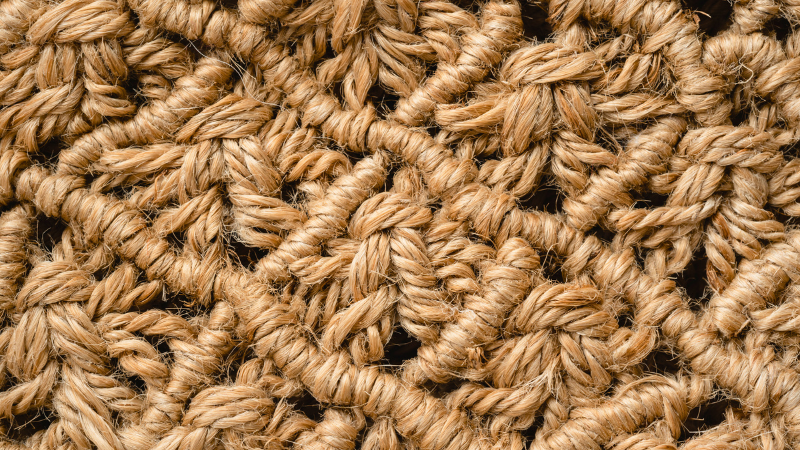
The agricultural textile industry has been using jute bags as they are durable and biodegradable in nature. Jute packaging is a natural alternative to synthetic bags, which could take hundreds of years to decompose, with a negative effect on the environment. This is how jute glitters in the field of packaging:
- Burlap bags: Jute burlap bags are very strong and have been relied on over the years to pack agricultural products like grains, coffee, rice and spices. They are also breathable in nature that helps maintain the quality of goods in storage and transportation. Also, jute bags are reusable, and this will lead to a decrease in the use of single-use plastic.
- Jute yarn: Jute yarn can be used to manufacture rope, twine and burlap sacks and offers a natural, powerful alternate to man-made fibers. It finds application in burlap sacks, agricultural wraps, shipping ropes, and keeps products safe during the shipping process with minimal impacts on the environment.
Home Décor: Adding Eco-Friendly Elegance
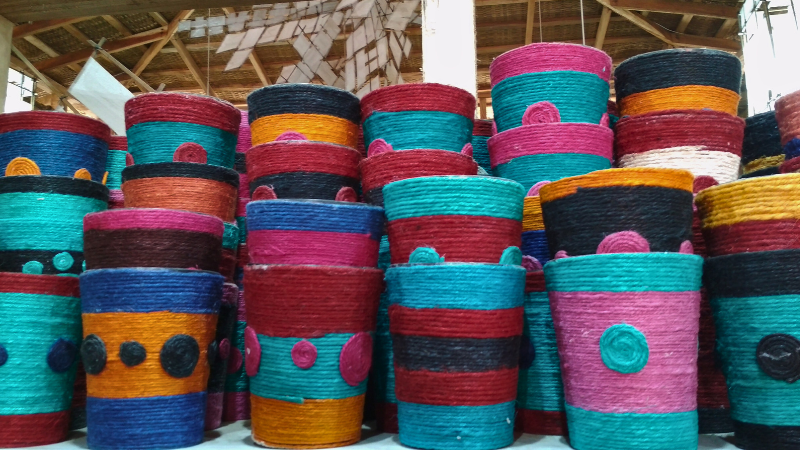
Jute fabric adds an earthy, natural look in the home decoration world that fits in well with many different design schemes. If you need to add texture to your living environment or want to locate some functional and eco-friendly furnishings, jute will provide them:
- Jute rugs and mats: Jute rugs are earthy in nature and give the ideal way of adding texture and warmth to any room. Not only are they pretty to look at, but they are also extremely sturdy, which is why this option is perfect in high-traffic zones.
Jute mats have natural light brown and beige color which perfectly mixes with almost any interior design, whether minimalistic or even boho chic. In addition to that, jute carpets are biodegradable and are quite a lot more sustainable than synthetic carpets. - Upholstery: Chair covers, curtains and wall hangings are made using jute fabric, which provides natural beauty to your home. Jute has a dense, relatively rough fiber which makes it durable and its natural color scheme allows it to appear rustic and elegant at the same time.
With home decor increasingly being oriented towards sustainability, having jute upholstery in your homes will not only help in having eco-friendly homes, but also adds a touch of classicism.
Fashion: Sustainable Choices for Stylish, Eco-Friendly Apparel
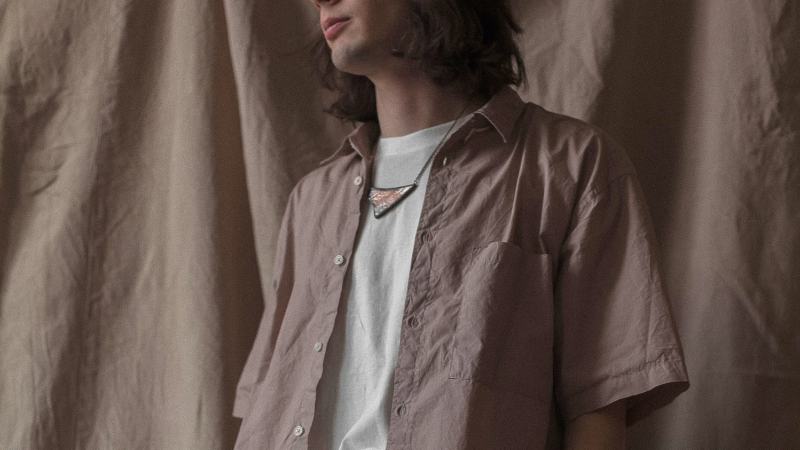
Jute fabric is becoming popular in the fashion industry due to its environmental friendly nature and strength. As people are increasingly becoming aware of the choices of clothing they wear, jute is a natural and fashionable alternative to synthetic fabric. This is how jute textile is entering fashion:
- Jute bags: Jute bags are a very sustainable fashion accessory which is both useful and beautiful. Whether it is a tote bag, hessian cloth, or a shoulder bag, jute bags are durable besides having a rustic appeal to them.
They are biodegradable hence can serve as a good alternative to plastic bags in terms of plastic waste reduction. Jute bags are the best friend of an eco-conscience shopper whether it is to go shopping or as an everyday carry all. - Jute jackets: If you are looking to have a special and eco-friendly image, then jute jackets are the way to go as they are stylish and still environmentally friendly.
This fabric is durable and comparatively coarse, though it can be processed to make classy jackets which are durable and able to give a rough, natural appearance. Whether it is casual or more formal, jute fabric jackets are ideal to wear by the fashion-forward people who want to make a statement of being environment-friendly.
Industrial: Eco-Friendly Solutions for Practical Applications
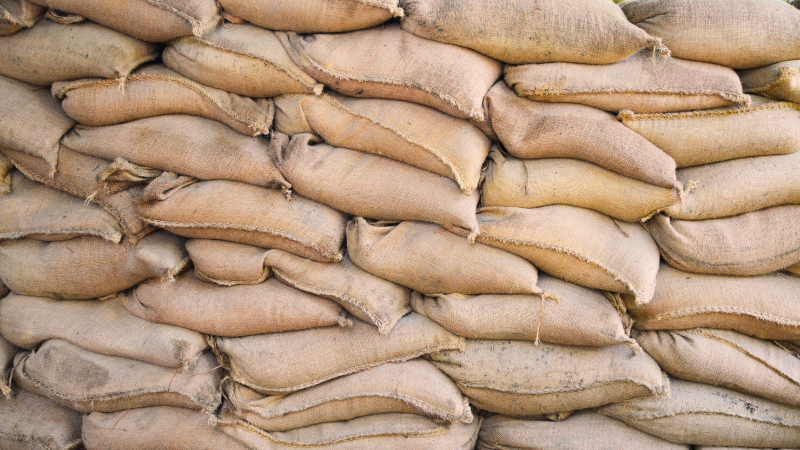
In addition to its application in home decoration and fashion, jute fiber is also imperative in other industrial textiles, especially where durability and environmental friendliness is needed. The following are some of the ways in which jute is very important in an industrial environment:
- Geo-textiles: Geo-textile jute is used in the management of erosion in construction activities. These are textiles which are biodegradable and can be utilized on soil stabilization and prevention of erosion particularly in areas where the natural vegetation is minimal.
The geo-textiles also enhance sustainable growth in construction and agricultural activities since they break down and enrich the soil. Jute is a good option as far as sustainable construction is concerned due to the fact that it is biodegradable. - Jute sticks: Jute sticks are utilized in providing the jute plants with the growth support during cultivation. They are also utilized in natural shade production, where they assist the plants to grow in moist climate.
The white jute plants also help in sustainable farming as they use natural resources to make the crops stand by using natural resources to ensure that the process of cultivation is eco-friendly and less wasteful.
Why Jute Is Considered Eco-Friendly
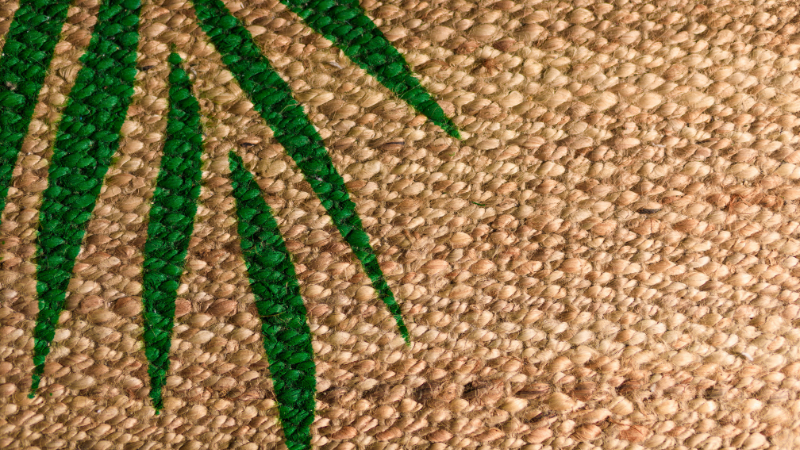
Jute has long been known to have sustainability andeco-friendly characteristics, which makes it a good option among environment-conscious consumers. The reason why jute is an environment friendly material is:
- Rapidly growing: Jute plants are very fast-growing particularly during the monsoon seasons every year and they do not need much water and pesticides. This renders it a very sustainable crop in comparison to other fiber plants such as cotton that uses a lot of water and chemical in its production.
- Naturally biodegradable and recyclable: Unlike the synthetic materials that take several centuries to decompose, jute fibres are completely biodegradable and recyclable, and they decompose naturally without any damage to the environment.
- Sustainable agriculture: Since the plant requires minimal fertilizer, Jute cultivation has been seen as a sustainable source of economic livelihood to millions of people in developing nations such as Bangladesh and India.
- Synthetic packaging or decor substitutes: Jute based products such as burlap bag and jute mat can be used in large quantities in place of the harmful synthetic products such as plastic and help make the planet a cleaner and greener place.
Pros and Cons of Jute Fabric
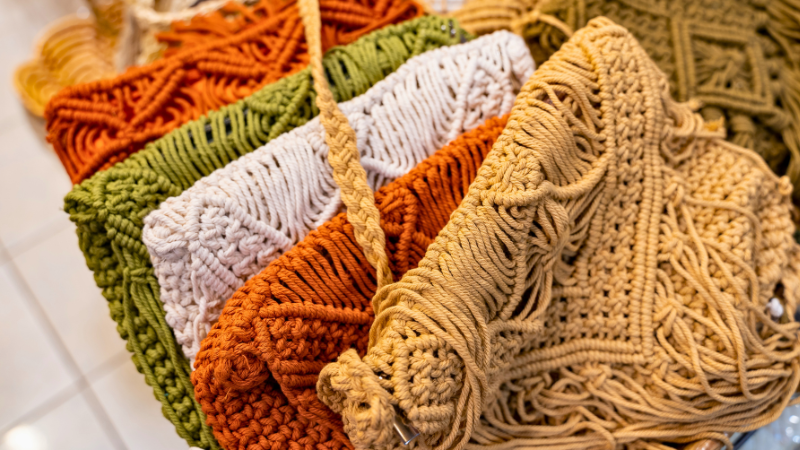
When talking about jute fabric, one should consider both its strengths and drawbacks. Let us have a closer look:
Pros
- Sustainable: Jute is a renewable product needing few inputs in the environment and it can be cultivated in many different climates.
- Inexpensive: Jute is an inexpensive material when compared to other primary textile fibers such as hemp or organic cotton, therefore, an inexpensive alternative to eco-sensitive consumers.
- Sturdy and robust: The fiber of jute is extremely sturdy and is therefore suitable in products that must endure wear and tear like ropes, bags and rugs.
- UV-resistant: Jute fabric can resist ultraviolet light, which implies that it will not wear out in the sun, and can be used indoors and outdoors.
Cons
- Rough texture: Jute is very strong, but its texture is somewhat rough and it cannot be ideal to use products where a softer feel is required.
- Wrinkles easily: Jute is a type of fabric that wrinkles easily and thus, it needs frequent care to look tidy and smooth.
- Vulnerable to mold when wet: Jute is extremely absorbent to moisture and when exposed to a wet area, there is a risk that it will collect mold or mildew.
Jute vs Other Natural Fibers
To have a better picture of how jute fares against other well-known natural fibers, the following is a brief comparison of jute against cotton, hemp, and flax:
| Feature | Jute | Cotton | Hemp | Flax (Linen) |
|---|---|---|---|---|
| Softness | Coarse and rough | Soft | Stiff | Crisp |
| Sustainability | Highly sustainable | Moderately sustainable | Very sustainable | Moderately sustainable |
| Cost | Affordable | Moderate | Higher | Moderate |
| Uses | Bags, rugs, ropes, decor | Clothing, bedding, towels | Textiles, ropes, paper | Linen textiles, clothing |
How to Care for Jute Products
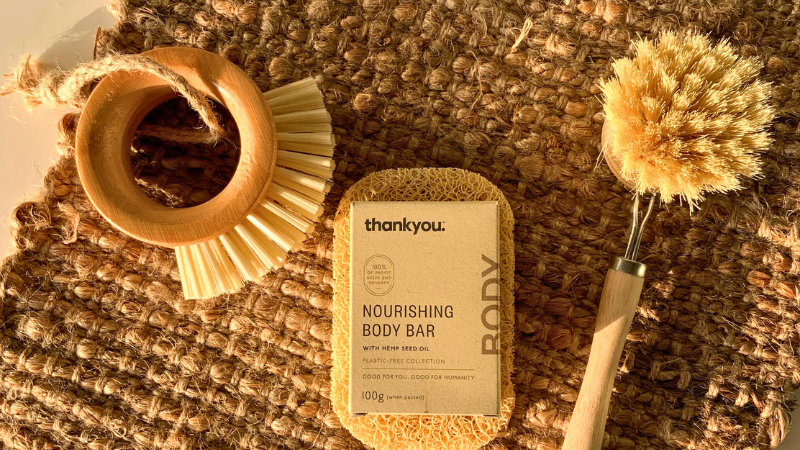
Your jute products need proper care in order to maintain their strength and their looks. The following are the best practices to maintain them in the best conditions:
Spot-Clean
- Jute fabric is not made to be washed heavily.
- To keep it intact you can spot clean using a mild detergent or take it to a professional dry cleaner.
Avoid-Washing
- Fibers of jute are water sensitive.
- Jute fabric should not be soaked or washed in a machine because this will weaken the natural fibre and make them shrink.
- Use mild cleaning techniques in order not to weaken its strength and texture.
Store
- Mold or mildew can be avoided by keeping your jute products in dry, well ventilated areas, free of humidity.
- This assists in sustaining quality and durability of the fabric.
Protect
- Jute products should not be exposed to sunlight because it causes them to fade and become ruined. Turn things in sunny areas so they do not wear one side.
Clean
- Cleaning of jute products should be done in a soft manner. Use soft attachment to clean vacuum jute rugs and do not use harsh chemicals.
Final Thoughts on Jute Fiber
Jute fiber is one of the most effective and sustainable products in the market with a variety of environmental friendly applications in different industries. In terms of packaging, home decoration, fashion or industrial needs, jute is a robust, solid and degradable alternative to synthetic fibers.
As a consumer dedicated to the eco-friendly lifestyle, the use of jute products that include burlap bags to jute rugs is not only the step toward more sustainable living but also the promise of investing in the production processes that can be considered environmentally friendly.
Using jute does not only make your home, wardrobe and workplace more beautiful, it also makes the planet greener. Go through our range of jute products today and begin to enjoy the environmental friendly nature of this golden fiber.






